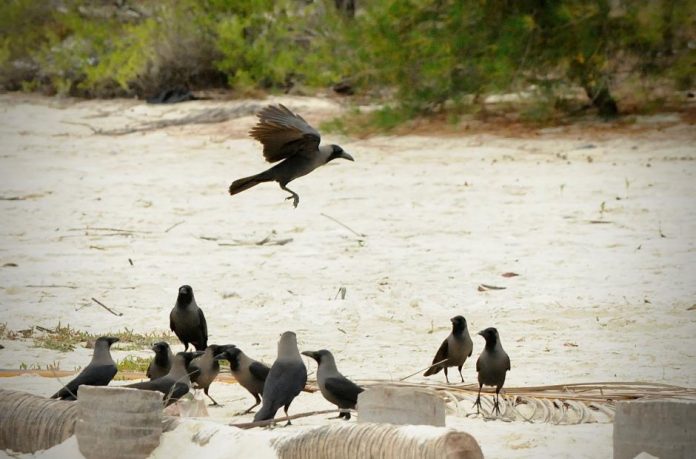
Tanzania’s capital city is under siege from these resilient, ruthless, and intelligent birds. And in the absence of effective and ongoing eradication programs, the rest of East Africa could soon be as well.
“The impact [of house crows] on the local bird populations is devastating,” says Dr. Colin Ryall, an expert in East Africa’s house crow problem, and founder of a global house crow monitoring project.
House crows are also notorious for damaging crops and attacking livestock. One recent studye stimated that crows were responsible for losses of 12.5% of Zanzibar’s maize output. Although current data is sparse, in 2010 the Wildlife Conservation Society of Tanzania (WCST) estimated crows were responsible for the loss of half of the eggs and 75% of the chicks kept by homeowners in Dar es Salaam.

The CIAA, in collaboration with Zanzibar authorities, is planning a new house crow eradication project that Blok hopes will eventually extend to mainland Tanzania, while in neighboring Kenya, authorities recentlypledged to tackle the pest in Mombasa.
The efforts come at a critical time. With a lapse in eradication programs, experts warn of an invasion of the heart of Africa, as sightings of the birds confirm their expansion inland. If that were to happen, the socio-economic and biodiversity losses would be colossal.
In the beginning
Ecologists estimate there are 1.3 million house crows in Zanzibar (paywall), one for every island resident. The scavengers, hailing from the Indian subcontinent, are believed to have first been imported by British diplomats in the late 1880s in a desperate bid to tackle the island’s mounting waste problem.
By 1917, house crows were officially declared a pest. But the smart and resourceful crows continued to thrive, gradually extending their rule of the sky to mainland Tanzania and then Kenya (p165).

House crows have successfully established breeding populations in 28 countries outside of their native range. Because their main food source is human organic waste, they can adapt to radically varying environments, as long as humans are present.
They’re also highly intelligent. Members of the corvid family have been known to use tools,solve complex problems, recognize human faces, and even hold grudges.
But, as Tanzanians well know, house crows have one more trait that makes them especially efficient and ruthless colonizers: they are gregarious. They work in teams to attack whole flocks of other birds, kill their chicks, and eat their eggs. Damage to poultry farms and crops is similarly systematic.
As human populations grow and accumulate more waste, the colonizing potential of house crows increases, especially in the absence of natural predators.
Plans afoot to eradicate the House crows
If they materialize, plans to relaunch crow eradication programs in Kenya and Zanzibar would be a positive step in mitigating their long-term impact on the continent.
Once they’ve acquired the initial funds, the next challenge will be the ongoing suppression of the crow population.
Between 2010 and 2013, Tanzania’s latest poison-based, foreign-aid funded control program killed 1.2 million crows, leaving behind a small, apparently innocuous reserve. A 15-month program in Zanzibar, launched in 2015, eradicated between a quarter and half of the island’s population.
Within just a few breeding seasons, the populations in both Tanzania and Zanzibar rebounded.
“I don’t think they’ll ever eradicate them.” Ryall says. “They’re just too clever
























 By
By 





